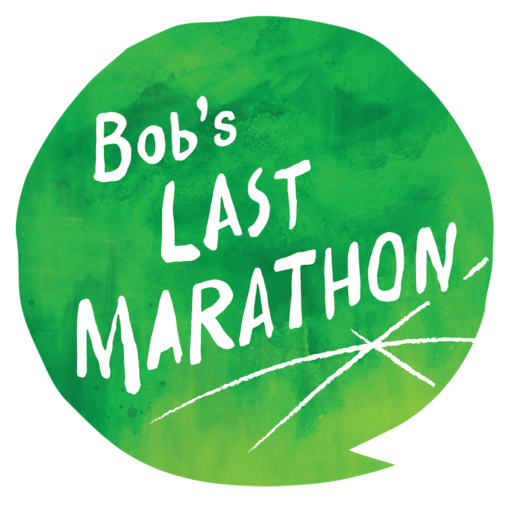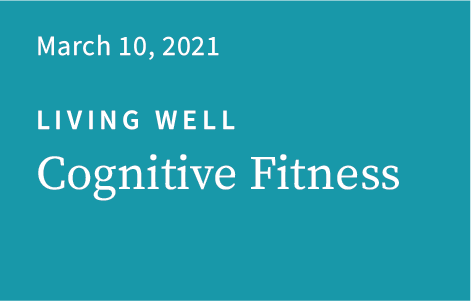Transcript
Cognitive Fitness
As clinicians, we are often asked by patients and families what they can do to help support cognitive health and improve day-to-day functioning. There are, in fact, some proven strategies. People can make lifestyle changes such as being physically and socially active, eating a Mediterranean diet, and managing sleep difficulties. They can pay attention to their cardiovascular health by controlling risk factors such as high blood pressure, high cholesterol, and diabetes. They can also learn techniques that focus directly on cognitive fitness.
At the Penn Memory Center, we are working to build cognitive fitness through two groups. One is a cognitive fitness psychotherapy group, which focuses on building skills to reduce stress, cope with challenges and take care of oneself, and manage depression and anxiety. The other addresses the need for compensatory strategies, including practices to compensate for certain memory and thinking deficits.
Today, I’ll talk about compensatory strategies, and use the Cognitive Fitness Skills program at the Penn Memory Center to illustrate how people can incorporate memory techniques into their daily routine to help minimize symptoms of cognitive decline and improve independence.
In our program, we begin by meeting with the patient and their care partner to get to know them. We identify their cognitive strengths and weaknesses. We learn how participants’ daily function is affected by changes in cognition, how they manage these changes, as well as what has worked, and what hasn’t.
Together, we create a set of personalized goals by answering the question: What specific changes would make a meaningful difference in the quality of your everyday life? By this we mean changes that translate into more independence for the participant, less burden on the care partner, and overall, greater life satisfaction for both. Even small changes can make significant differences. For example, maintaining regular contact with a friend or family member for social interaction and creating a regular bedtime routine to improve sleep can have positive effects on memory skills. We have seen that when someone takes on a chore it may ease the burden on a spouse and can improve daily life. These specific goals become the basis for an individualized roadmap and we work to put more tools in the patients’ toolbox to achieve the goals and improve day-to-day function.
There are typically about eight participants in each compensatory strategy training group, who meet weekly for eight weeks. We chose the group format because people with cognitive change often share similar daily challenges, frustrations, and anxieties. A group setting allows them to get support and feedback from their peers, learn from their successes and challenges, and offer solutions based on their experiences. The focus of the program is to help participants cultivate new everyday habits that will help them function as well as possible, as independently as possible. Toward this goal, we teach individuals how to use tools such as external memory aids, internal memory aids, and home organization skills.
Externalmemory aids are simply basic tools, like calendars or lists, that everyone has used at some point in their lives for work or specific projects. They may no longer meet the participant’s needs after retirement, or perhaps were abandoned simply because of life changes. But these familiar tools may become useful again as a memory aid.
After we ask participants to identify the external memory aid they feel most comfortable using—some like paper-and-pencil calendars, others prefer a smartphone or tablet—our goal is to get everyone in the habit of using them. They are taught to use the memory aids for three specific purposes: a daily schedule, a to-do list, and journaling.
The daily schedule not only gives structure to the day, but reminds participants of upcoming events, and encourages regular activities that we know to be beneficial for people with cognitive change, like physical activity, or calling a friend. The daily schedule is tailored to the participant’s unique cognitive and wellness goals.
The to-do list can function as a typical reminder of things that need to be accomplished. But it can also serve as a place to list options for daily activities, depending on the individual’s self-initiation and motivation.
We encourage journaling not only as a way to reflect on experiences, but also as a tool for keeping track of important details that might prove useful later. For example, when talking to a friend on the phone, participants are asked to take notes to record things like the friend’s move to a new town, a child’s new job, or a grandchild’s sports accomplishments. The next time they plan to speak with the friend, participants can refer to the journal as a reminder and to follow up on these events. In this way, they can also enrich their social connections.
However, there are times when external memory aids are not available or simply not practical. In these cases, internal memory aids, or mnemonic devices like acronyms or acrostics, can be useful. A common example is ROYGBIV, an acronym many of us learned early on to remember the order of colors in the rainbow. We know that people with memory loss have clearer memories from earlier in life. When creating mnemonics, it’s helpful to pair old information with new information; for example, using a childhood home address to create memorable new passwords.
The support of someone at home—a spouse, adult child, or good friend—can really help reinforce new habits. That’s why we keep care partners involved and informed through weekly updates and encourage their engagement in home practice activities. In fact, as we reach the end of the program, we make sure participants work with their home care partners to create systems that support memory and organization, and simplify daily routines—for example, making a specific spot a “home” for frequently used and misplaced items, like phones, keys, and glasses. To help someone get in the habit of using it, we might need to go overboard at first, by making a brightly colored sign to point to the “home” and catch the person’s attention. Once the routine is established, the sign can be taken down.
With each new group, I stress that the work they do is a partnership, not just with the clinicians who facilitate their program, but among their fellow participants. We discuss how their collective wisdom
and the creative solutions they share with one another every day are valuable, and tell them that we will pass them on to help those who follow.
Dawn Mechanic-Hamilton, PhD, ABPP/CN
Director of Cognitive Fitness Programs and Neuropsychological Services, Penn Memory Center
Assistant Professor, Department of Neurology, Hospital of the University of Pennsylvania

